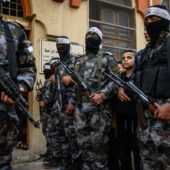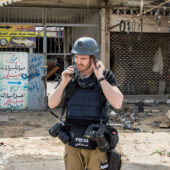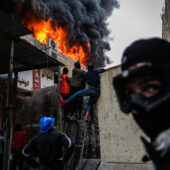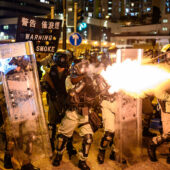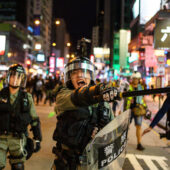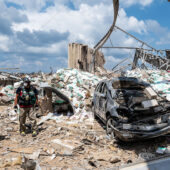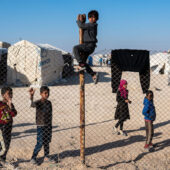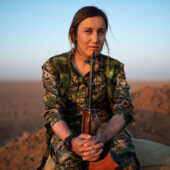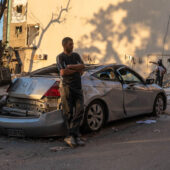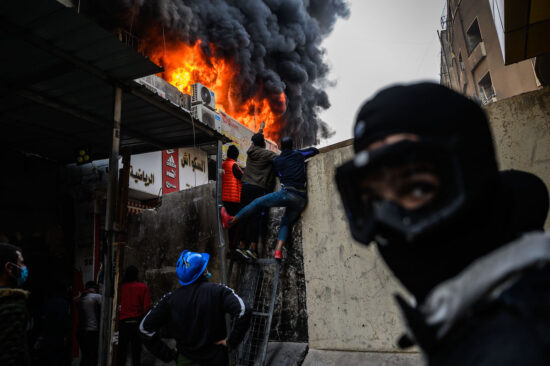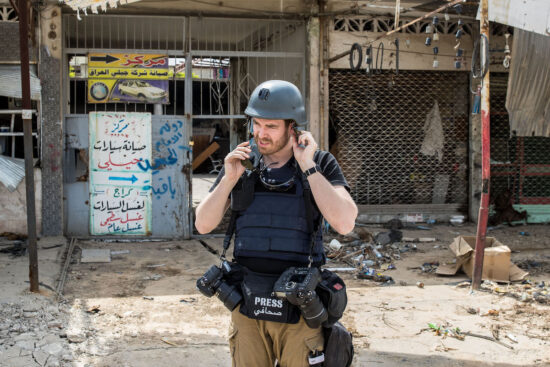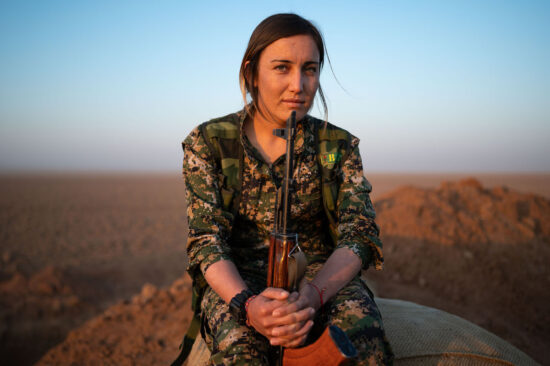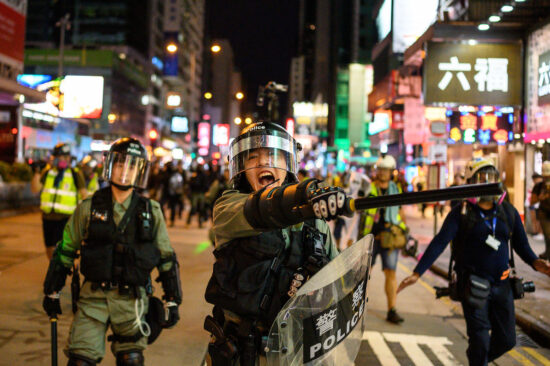Nikon Z6 for war/conflict journalism by Alex Kühni (Instagram: @alex_kuehni | Web: www.alexkuehni.com):
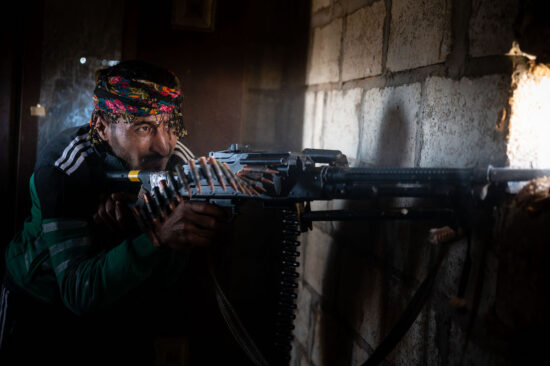
Syrian civil war: A Kurdish-Arab fighter fires his machinegun on Turkish backed militants in late 2019 / Z6, 50mm, f2.8, ISO 2000
With great interest I read the NR guest posts about working with Nikon gear in different fields of photography. As a photojournalist focused on war and conflict, I would like to contribute my own experiences working with the Z system. Let’s start with some background on how I usually work in the field. I always carry two bodies and pack 3–4 lenses. The two bodies are an insurance to continue working in case one breaks. I’m a fixed focal length shooter on most assignments so two bodies also preventing me from frequently swapping lenses. About 80 percent of my keepers are shot in 35mm which is my main lens just about glued to one of the bodies. I love 35mm photos but I recently discovered that I really like the 50mm focal length too. On the second camera I switch between 24mm and 50mm. 24mm is an amazing focal length and I always find a few shots I like who go hand in hand with the 35mm images. I like to have a final photo report about a topic or event in only 2–3 different focal lengths. In a series, it connects the photos better to each other in my opinion. Because the Z 24–70 is such a great lens, I sometimes also worked with it instead the 24 and 50 but then tend to use it only on 24mm or 50mm for consistency reasons.
Weight and the electronic eye
Before the Z-system I mostly worked with either two single digit D’s or like a D5/D850 combination. I love the Nikon DSLR and I have used them professionally and personally for over 10 years. But I was always eyeing towards mirrorless for the lighter gear and EVF. Weight is a critical issue when working in conflict because of airline baggage weight limits. On location, I mostly carry all my camera gear plus other stuff such as a Kevlar helmet, bulletproof vest, trauma kit, backpack, etc. on me and have to be able to run if necessary. So not having tow heavy bodies dangle on my side is really helpful. Working with an EVF was always very tempting for me. During the urban Battle for Mosul back in 2016–2017, I was embedded with Iraqi forces. I missed a couple of photos when bullets where flying, because we consistently changed from houses to rooftops to streets to houses and I often forgot to adjust ISO under stress. I even took two Fuji X-T2 to Iraq in early 2017 and was shooting with them for two weeks. I loved the Fuji system and personally found it easier to work with mirrorless. Back then I decided against switching the system because there were already rumors about Nikon going into FF mirrorless and I couldn’t get 100 percent on board with APSC focal lengths and DOF.
Early adopter
In late 2018 I preordered a Z6, the Nikon 35mm 1.8 and took it alongside a D5 to the Gaza Strip during the border riots. I was instantly convinced by the size to IQ ratio of the camera and ordered a second body to piece by piece switching to Z. In 2019 I worked with two Z6 bodies in Syria, Iraq, the Philippines and a few weeks during the Hong Kong protests. In Hong Kong most of the “Action” happened at night, so I shot the 35mm wide open all the time. The Autofocus was great, and if I had any focusing problems, I was able to confidently switch to manual with focus peaking. The bright EVF was very helpful as well since I often had to work with a gasmask. As a photojournalist it’s always a good idea to be as invisible a possible and the low-key appearance of Z6 and a fixed focal length lens is really helpful in the field.
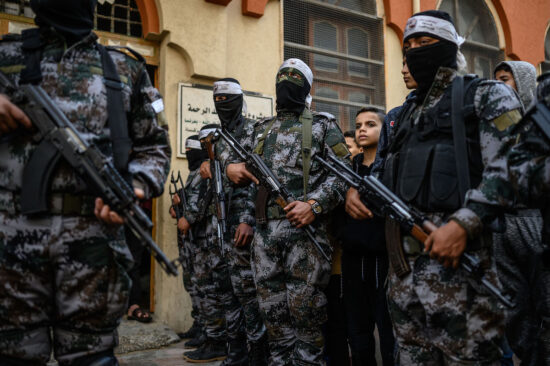
Palestinian militants during a martyr funeral in the Gaza Strip, December 2018 / Z6, 35mm, f1.8, ISO 200
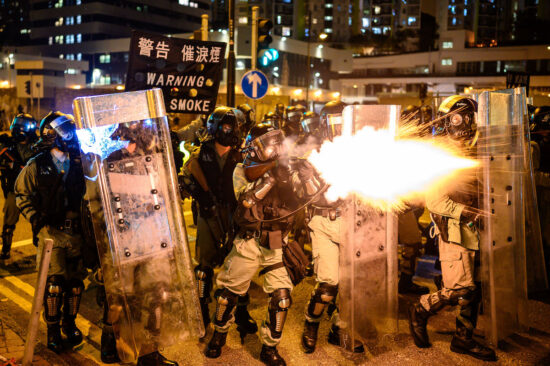
Hong Kong riot police firing tear gas during clashes with protesters, August 2019 / Z6, 35mm, f1.8, ISO 5000
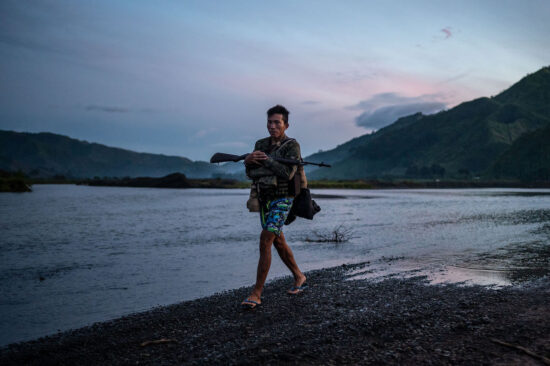
Tribal fighter during an operation to push back NPA rebels on Philippine island of Mindanao, late 2019 / Z6, 35mm, f1.8, ISO 2000
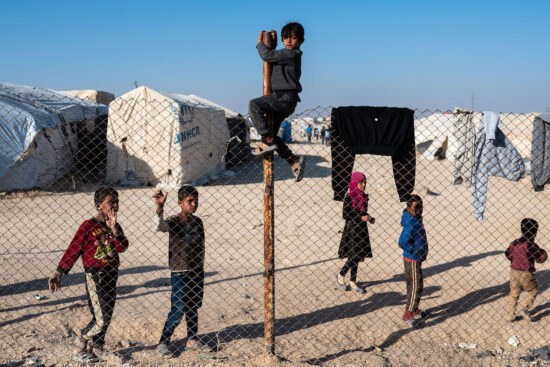
Children of defeated Islamic State militants in the Al-Hol refugee camp, Syria late 2019 / Z6, 35mm, f3.5, ISO 200
The pandemic
In 2020 I was only rarely able to travel. One exception was an assignment documenting the aftermath of the Beirut blast in August. Since the pandemic I’m more or less grounded in my home base Switzerland, documenting totally new frontlines in hospital ICUs. While working in hospitals, I was happy about the electronic shutter and the durability of the Z cameras, having to frequently wiping them with sterilizing liquids.
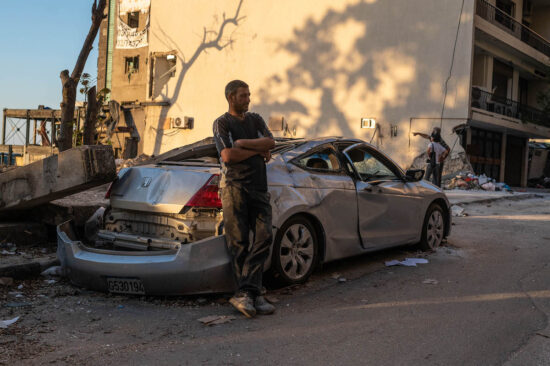
Destruction in the Lebanese capital after the explosion of 2700 tons ammonium nitrate, Beirut August 2020 / Z6, 35mm, f4.0, ISO 800
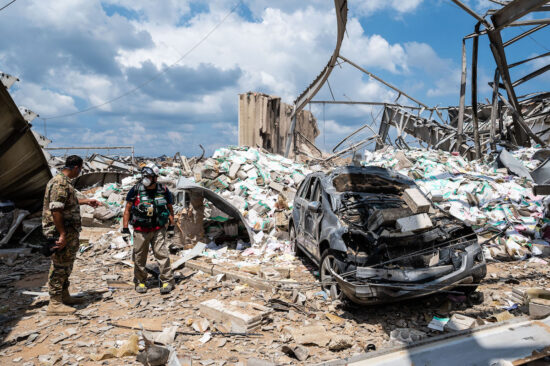
The destroyed port after the explosion of 2700 tons ammonium nitrate, Beirut Lebanon August 2020 / Z6, 24mm, f6.3, ISO 200
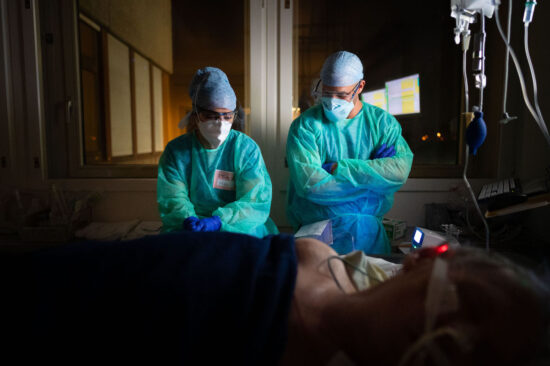
The new frontline: Night shift in a SARS-Covid-19 ICU, Switzerland April 2020 / Z6, 24mm, f1.8, ISO 9000
The now
A month ago, I sold my D850 to buy the Z7II for high megapixel jobs, finalizing the switch to Z. Also, I changed one of my Z6 bodies to a Z6II mainly for the second card slot working on backup. In the past I had the unfortunate experience being forced to show the content of my camera to soldiers and have to delete photos. With two card slots it was no problem, since I always knew that a copy was still there not showing on the Display. I sometimes even removed one card before passing checkpoints. The better AF of the Z6II is also nice but not really that relevant for me, since I never had any problems with the Z6 for my needs.
The future
As probably many of you, I’m excited to see what kind of Z flagship Nikon puts out in the future. Back when the Z6 was released I first ordered it mainly to get used to mirrorless and then wait switching until a D5/D6 mirrorless equivalent hits the marked. After working with the Z6 for a little over two years I’m not really sure if I need anything more than the Z6II for photojournalism. After all, so much of the technical side of photography is more about the lenses, and the Z glass is top of the line.
If you have an interesting idea for a guest post, you can contact me here.
